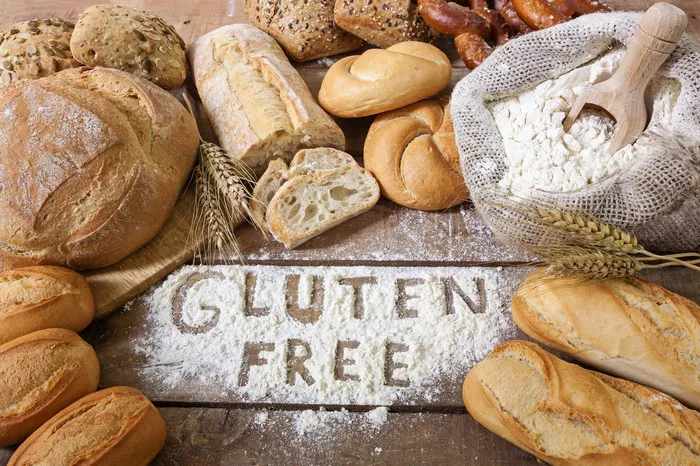In recent years, there has been a significant increase in awareness and demand for gluten-free products, driven by individuals with celiac disease, gluten sensitivity, or those simply choosing to adopt a gluten-free lifestyle for health reasons. Among the array of gluten-free options available, small cakes have emerged as a delightful treat for those seeking to indulge without compromising on dietary restrictions. In this article, we delve into the world of gluten-free small cakes, exploring their history, ingredients, baking techniques, and the creative possibilities they offer.
Understanding Gluten and Its Impact
Gluten, a protein found in wheat, barley, and rye, serves as a binding agent in many baked goods, providing elasticity and structure. However, for individuals with celiac disease, gluten triggers an autoimmune response that damages the small intestine, leading to various gastrointestinal symptoms and long-term health complications. Even those without celiac disease may experience gluten intolerance or sensitivity, manifesting in similar symptoms such as bloating, fatigue, and digestive issues.
The Evolution of Gluten-Free Baking
The growing demand for gluten-free alternatives has spurred innovation in the culinary world, particularly in baking. Traditional small cakes, typically made with flour containing gluten, have undergone transformation to accommodate dietary restrictions while retaining their deliciousness and texture. Gluten-free flours such as rice flour, almond flour, coconut flour, and tapioca flour have become staples in the pantry of gluten-conscious bakers, offering a diverse range of flavors and textures.
Key Ingredients for Gluten-Free Small Cakes
Creating gluten-free small cakes requires a careful selection of ingredients to achieve the desired taste and texture.
Gluten-Free Flour Blends: Many gluten-free bakers rely on custom flour blends to mimic the properties of traditional wheat flour. These blends often combine various gluten-free flours, starches, and binding agents to achieve the desired consistency and structure.
Natural Binders: In the absence of gluten, natural binders such as xanthan gum, guar gum, or psyllium husk powder are essential for holding the ingredients together and preventing crumbling.
Alternative Sweeteners: To sweeten gluten-free small cakes, bakers often use natural sweeteners like honey, maple syrup, or coconut sugar, avoiding refined sugars that may cause inflammation or spike blood sugar levels.
Dairy-Free Options: Many individuals with gluten intolerance also have sensitivities to dairy products. Therefore, recipes for gluten-free small cakes often incorporate dairy-free alternatives such as almond milk, coconut milk, or vegan butter to accommodate these dietary restrictions.
Flavor Enhancers: To add depth and complexity to the flavor profile, ingredients like pure vanilla extract, citrus zest, or spices such as cinnamon and nutmeg are commonly used in gluten-free small cake recipes.
SEE ALSO: A Guide to Ownership Structure of Waffle House Franchise
Baking Techniques for Gluten-Free Success
Baking gluten-free small cakes requires a slightly different approach than traditional baking methods. Here are some tips to ensure success:
Proper Mixing: Unlike gluten-containing batters, gluten-free batters should not be overmixed to avoid developing a tough texture. Mix until just combined to achieve a light and airy cake.
Preventing Dryness: Gluten-free flours tend to absorb more moisture than wheat flour, leading to dryness in baked goods. Adding ingredients like applesauce, yogurt, or mashed bananas can help retain moisture and improve texture.
Leavening Agents: Gluten-free batters often benefit from additional leavening agents such as baking powder or baking soda to help the cakes rise and achieve a fluffy texture.
Pan Preparation: Properly greasing or lining the baking pans is crucial to prevent sticking, as gluten-free batters are often more delicate and prone to sticking than their gluten-containing counterparts.
Cooling and Storing: Allow gluten-free small cakes to cool completely before removing them from the pan to prevent breakage. Store leftovers in an airtight container to maintain freshness and prevent them from drying out.
Creative Possibilities and Flavor Combinations
One of the most exciting aspects of gluten-free small cakes is the opportunity to experiment with unique flavor combinations and creative presentations. From classic vanilla and chocolate to exotic fruit-infused varieties, the possibilities are endless. Here are some flavor inspirations to ignite your imagination:
Lemon Blueberry Bliss: Tangy lemon zest paired with juicy blueberries creates a burst of flavor in every bite, perfect for a refreshing summer treat.
Decadent Chocolate Indulgence: Rich cocoa powder and dark chocolate chunks come together to satisfy even the most intense chocolate cravings, making it a crowd-pleasing favorite.
Spiced Pumpkin Delight: Warm spices like cinnamon, nutmeg, and cloves complement the earthy sweetness of pumpkin puree, evoking the cozy flavors of fall.
Zesty Orange Almond: The aromatic essence of orange combined with the nutty flavor of almond flour creates a harmonious blend of citrusy sweetness and nuttiness.
Tropical Coconut Pineapple: Transport your taste buds to a tropical paradise with the tropical flavors of coconut and pineapple, reminiscent of a sunny beach getaway.
Conclusion
As awareness of gluten intolerance and celiac disease continues to grow, the demand for delicious gluten-free alternatives has never been higher. Gluten-free small cakes offer a delectable solution for satisfying sweet cravings while accommodating dietary restrictions. With the right ingredients, baking techniques, and a dash of creativity, gluten-free small cakes can delight the taste buds of everyone, regardless of their gluten sensitivity. So, whether you’re baking for yourself or sharing with friends and family, embrace the joy of gluten-free small cakes and indulge in every bite guilt-free.

